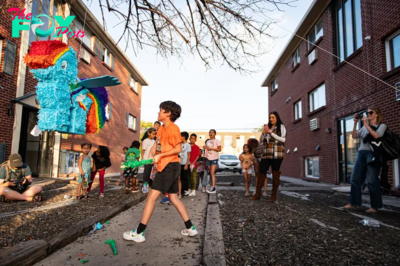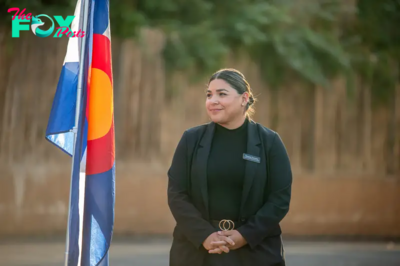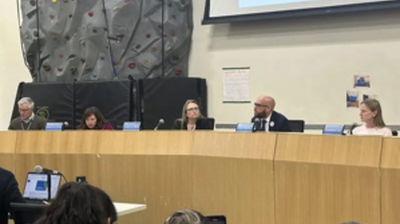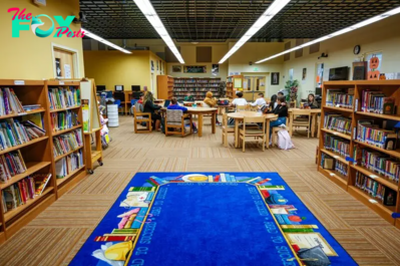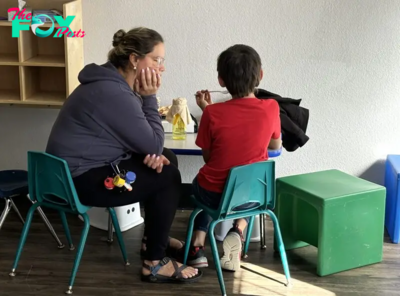Education
In a time of challenge and innovation, a Colorado library card checks out more than books. Lots more.
Story first appeared in:

HUGO — While kids meander among the stacks at the Hugo Public Library, 5-year-old Letty Nuffer sits cross-legged at a table concentrating on her language skills using a borrowed laptop computer that displays a fun video to show her how to pronounce consonant blends.
Thanks to a pilot project in teleHealth, Letty can access therapy for her speech delay without a four-hour round trip to Denver for an in-person appointment. By checking out an equipment kit designed to facilitate a wide range of Health care consultations, Letty’s mom, Kali Nuffer, can connect directly with her therapist as well as to specially designed video lessons.
The library, already an almost daily destination for Nuffer’s family, now has become the conduit for virtual doctor’s appointments for all four of her kids — just one more service that the facility offers beyond the traditional resources for residents on the Eastern Plains. Kristin Allen, the library’s director, says this year’s addition of teleHealth has started to become, well, contagious.
“I’ve had several people recently call and say, ‘How can I do this? How can I get one of those kits?’” she says. “Just come down and get a library card. That’s all you need.”
For many Coloradans, today’s library card unlocks a lot more than books or even an ever-expanding array of digital material available from 113 public library jurisdictions across the state — and that’s particularly significant for relatively far-flung rural communities whose smaller systems account for nearly 75% of the total.
The way libraries serve the public has evolved significantly over the last several years — a trend that only accelerated during the COVID pandemic, says State Librarian Nicolle Davies. She notes that libraries “leaned into Technology” for the entire range of patrons, whether that involved teaching grandparents how to use video chat apps, preparing job seekers for a 21st-century workforce or helping kids advance their digital literacy.
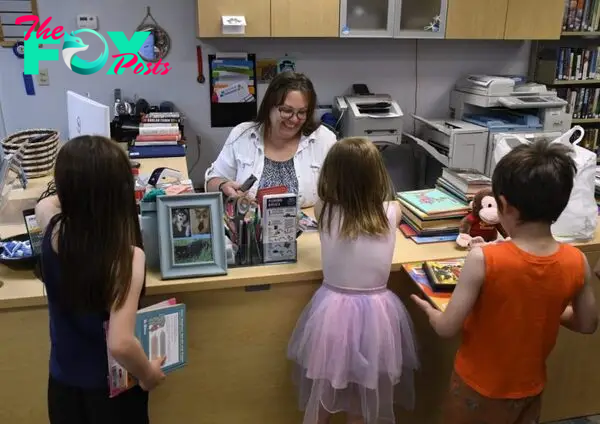
“For years, we were really freaked out that everybody identifies us as just books, but we’re so much more,” Davies says. “And the reality is we’ve been in the (digital) space long enough now that we’re comfortable saying, ‘Yeah, we are still about books and we’re about all these other things as well.’ So it’s very surprising when people visit libraries today and find out what we’re doing and what we have, because the perception still can be outdated and antiquated.”
The pandemic necessitated a number of innovations that worked around COVID restrictions, and many of those remain. Davies, who lives in Douglas County, recalls checking out a meat-smoking kit from her local library that came complete with recipes and seasonings. She also checked out an outdoor version of the block-stacking game Jenga for the family to play.
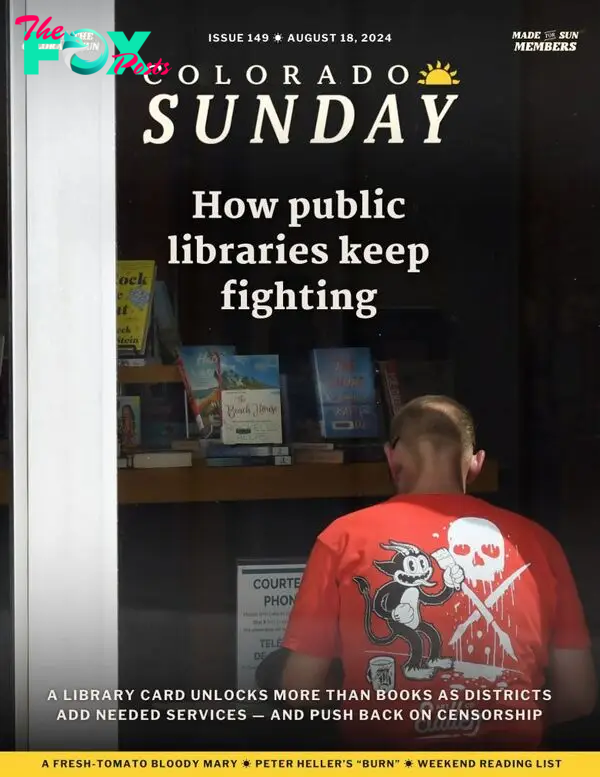
This story first appeared in
Colorado Sunday, a premium magazine newsletter for members.
Experience the best in Colorado news at a slower pace, with thoughtful articles, unique adventures and a reading list that’s a perfect fit for a Sunday morning.
“There were just so many ways that the library got really creative on how to provide services to people during the pandemic,” she says.
The pandemic also elevated the role of libraries when it came to digital resources like ebooks, audiobooks, streaming movies and music, notes Sherri Baca, executive director of the Pueblo City-County Library District. She said her district reallocated its 2020 budget to pump up funding to digital vendors, embracing the “library at home” concept that meant buying fewer hard-copy books in order to meet the needs of homebound patrons with digital offerings.
“Readers are reading, but the formats are a little different, which is great,” Baca says. “I think that that’s what libraries are supposed to do, move with the times and be very relevant to our users, and get them what they need when they need it.”
That credo has provided scaffolding for public libraries’ ongoing evolution, a transformation forged in times of a devastating virus and deafening political noise — both challenging factors as library workers face burnout on one hand and, on the other, an invigorating reimagining of their role. Pushing back against the headwinds of censorship, libraries have sought to serve as patches in the social safety net, channels closing the distance between patrons and health care, and myriad other functions — while still navigating the shifting demands for information and entertainment in all its digital and analog forms.
Digital content use was escalating even before the pandemic, and COVID ratcheted the demand even higher. But for the Denver Public Library, there’s still high interest not only in bound books, but also older media formats such as CDs and DVDs, which remain popular among those who may not have access to the latest streaming technology.
“We think that’s an equity issue,” says Michelle Jeske, the city librarian and executive director of the Denver Public Library. “A lot of people still don’t have high-speed internet access or may not have great devices for downloading ebooks or streaming videos. Some people might still have a VCR or a Blu-ray player, so we’re still seeing use of those formats. And that’s why we’re continuing to buy or support that part of our collection.”
☀️ READ MORE
The economics of eating out have some of Denver’s top chefs dismayed, discouraged and looking elsewhere
Big city water buy-ups in the Lower Arkansas Valley are raising alarms as age-old battles erupt again
The Colorado community of Stagecoach is paradise to its residents. A luxury resort could turn it upside down.
The specter of censorship

In any format, library collections nationwide have become the target of challenges — some from individuals, others orchestrated by politically motivated groups that have brought issues surrounding intellectual freedom prominently into the public discourse.

Sept. 27 | 7:30 a.m.-4 p.m.
The libraries of the past are gone. So what are they now?
Remember when a library’s search engine was its card catalog? A lot has changed since then — from the materials to the technology to the scope of libraries’ very mission. Sun writer and book editor Kevin Simpson moderates a panel of experts for a conversation about the changes — and challenges — to a venerable American institution.
Join us for the panel at SunFest 2024.
Colorado isn’t without its conflicts, but has been far less affected than many other states. Still, lawmakers in the last legislative session passed a measure designed to reinforce the policies and procedures Colorado’s public libraries employ not only to acquire and use materials, but to deal with challenges to their content.
James LaRue, executive director of the Garfield County Public Library District, has dealt with more than a thousand such challenges over a career in library management that includes stints as director of the Douglas County libraries as well as with the American Library Association’s Office for Intellectual Freedom. His book “On Censorship” explores the motives behind the challenges, which have come from across the political spectrum, and the dangers of book banning.
“It has gone from the one or two people that get upset by running across something in a library to being more centrally coordinated,” he says, noting that nationally many of the recent objections stemmed from both isolation during the pandemic that pulled some down conspiracy rabbit holes and political strategy aimed at motivating conservatives for the 2022 midterm elections — most often by objecting to books with LGBTQ content.

Poll after poll says this is a deeply unpopular view, that 70% of either party is opposed to censorship. But why do they keep at it? Because it seems to work. It gets people riled up, and as always in America we are both obsessed with and repelled by sex.
— James LaRue, executive director of the Garfield County Public Library District
“Poll after poll says this is a deeply unpopular view, that 70% of either party is opposed to censorship,” LaRue says. “But why do they keep at it? Because it seems to work. It gets people riled up, and as always in America we are both obsessed with and repelled by sex.”
-

 Education2d ago
Education2d agoPhiladelphia students have a new reading and writing curriculum − a literacy expert explains what’s changing
-

 Education2d ago
Education2d agoWhy school police officers may not be the most effective way to prevent violence
-

 Education5d ago
Education5d agoCampus diversity is becoming difficult to measure as students keep their race and ethnicity hidden on college applications
-

 Education6d ago
Education6d agoFederal judge rules that Louisiana shalt not require public schools to post the Ten Commandments
-
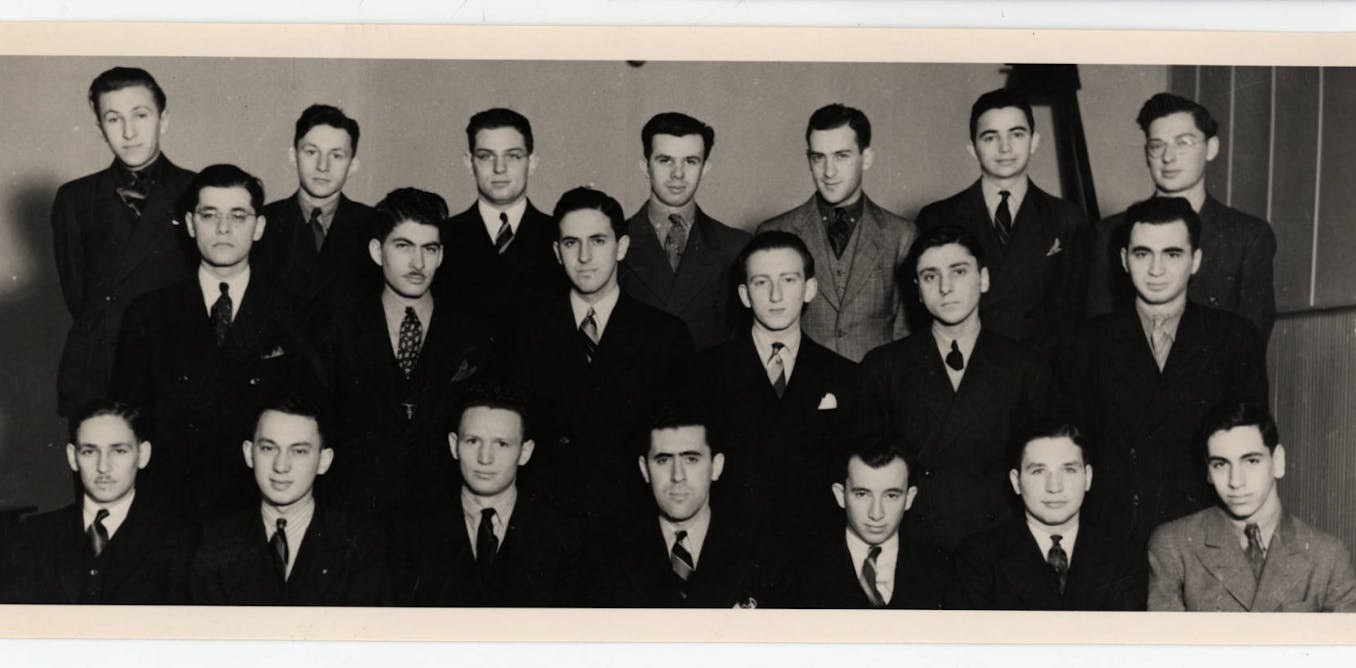
 Education6d ago
Education6d agoCampuses are ground zero in debates about antisemitism − but that’s been true for 100 years
-

 Education1w ago
Education1w agoSocioeconomic status explains most of the racial and ethnic achievement gaps in elementary school
-

 Education1w ago
Education1w agoMothers, metaphors and dyslexia: What language reveals about the challenges of a child’s learning disability
-

 Education1w ago
Education1w agoBrain-training games remain unproven, but research shows what sorts of activities do benefit cognitive functioning
